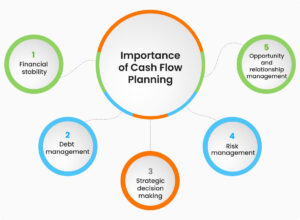Nonprofit Financial Hub

Why Do Nonprofits Borrow?
Based on our work with thousands of nonprofit organizations, B Generous has identified the top reasons why nonprofits borrow and how strategic borrowing can strengthen missions rather than distract from them. For many nonprofits, the word “loan” carries an air of hesitation. But in practice, borrowing, when done thoughtfully, can be one of the most effective tools to stabilize operations, expand impact, and seize opportunities.
Below we break down the most common reasons nonprofits turn to borrowing and how these decisions can support financial health and mission success.
Capital Projects
Large-scale investments, like constructing a new facility, renovating offices, or building community infrastructure, often require funding beyond what reserves or annual fundraising can cover. Borrowing enables nonprofits to move forward without waiting years to accumulate donations. Knowing the funds are available and the cost of funds makes planning and forecasting far more efficient:
- Predictable repayment schedules help boards and executives forecast expenses.
- Paying contractors and suppliers promptly often unlocks discounts.
- In inflationary environments, acting sooner can prevent costs from ballooning.
For nonprofits, financing capital projects is not just about bricks and mortar. It’s about creating a permanent foundation for long-term mission delivery.
 Operational Cash Flow
Operational Cash Flow
Cash flow challenges are among the most universal pain points for nonprofit organizations. Donations, pledges, or grant disbursements are frequently delayed, and seasonal fundraising fluctuations can leave gaps.
Borrowing to cover short-term operating needs ensures:
- Staff get paid on time.
- Programs continue without interruption.
- Leadership can focus on fundraising and mission—not scrambling for emergency cash.
A small working capital loan or line of credit can provide the stability nonprofits need to keep moving forward.
Program Expansion
A nonprofit may discover an urgent need in the community, or a chance to pilot a new program, but fundraising campaigns take time. Loans can provide immediate resources to:
- Launch a new program quickly.
- Expand existing services into underserved communities.
- Demonstrate impact early, which in turn can attract new donors and grants.
Speed often makes the difference between seizing an opportunity and missing it altogether.
Equipment and Technology
From vehicles for transporting clients to CRM systems, medical equipment, or upgraded IT infrastructure, technology and equipment are mission-critical. Yet, they require significant upfront investment. Borrowing allows nonprofits to spread out the cost of modernization and stay competitive in a digital-first world.
Bridging Funding Gaps
Pledges and government grants often come with delayed disbursement schedules. A bridge loan helps organizations continue their work seamlessly while waiting for funds to arrive.
Instead of halting programs until funds clear, nonprofits can:
- Smooth operations with confidence.
- Avoid losing momentum with staff, volunteers, and community partners.
- Reduce stress and uncertainty about donor or grant follow-through.

Real Estate Purchases
For many nonprofits, buying rather than renting is a strategic long-term investment. Specialized facilities such as classrooms, clinics, shelters, or animal care centers are expensive to lease and may not be widely available. Borrowing makes ownership attainable, especially for:
- Educational institutions.
- Health care providers.
- Animal welfare organizations.
Owning real estate can also improve a nonprofit’s balance sheet, reduce annual costs, and create stability.
Emergency Situations
Natural disasters, pandemics, or sudden community crises can force nonprofits to adapt overnight. Having access to a line of credit or emergency loan allows organizations to:
- Pivot operations quickly.
- Meet urgent community needs.
- Avoid shutting down services during the worst moments.
Preparedness is part of resilience, and borrowing is often a key part of preparedness.
Investment or Economic Opportunities
Sometimes opportunities knock unexpectedly. Occasionally, nonprofits encounter opportunities that require immediate capital, such as:
- Purchasing assets at a favorable price.
- Entering a partnership that enhances mission delivery.
- Securing a limited-time matching gift challenge.
Borrowing allows organizations to act decisively when opportunity arises, rather than watching it slip away.
Debt Refinancing
Some nonprofits carry high-interest debt in the form of credit cards with rates above 20%, costly merchant cash advances, or simply overpriced loans. Refinancing through lower-cost nonprofit lending saves money and frees resources for mission-driven activities.
Strategic refinancing can turn a financial burden into a more manageable, mission-friendly repayment plan.
Life Happens
Despite best planning, challenges arise. Sometimes nonprofits borrow simply to:
- Retain staff during a downturn.
- Cover basic expenses while seeking new funding.
- Keep doors open during unexpected transitions.
Borrowing in these moments is less about growth and more about survival—and it can buy the time needed to re-stabilize.
B Generous Insights: Borrowing with Intention
In all these scenarios, the key is strategy. A loan is not a grant, nor is it “free money.” But when structured responsibly, borrowing can be a catalyst for positive outcomes.
At B Generous, we’ve seen that the most successful borrowing decisions include:
- Board and senior leadership buy-in. Debt should not be a surprise, it should be a shared, strategic decision.
- Clear repayment planning. Loans should be sized appropriately and matched to realistic revenue streams.
- Mission alignment. Borrowing should enable, not distract from, the organization’s core purpose.
Borrowing, in the right context, is not a sign of weakness but rather it’s a sign of foresight and sustainability.


